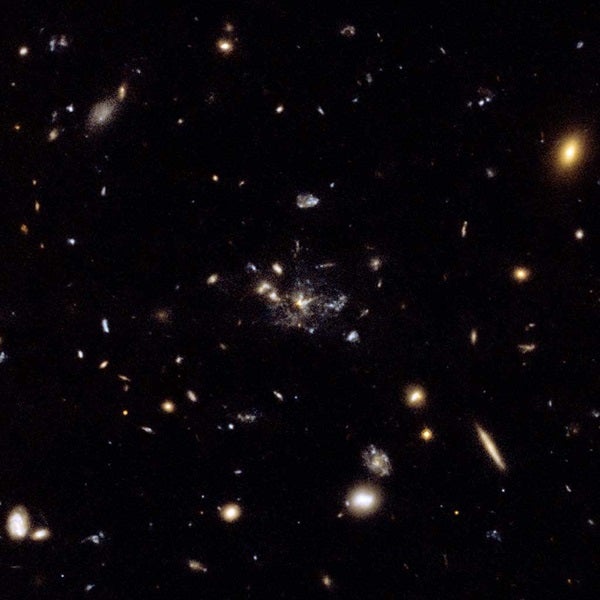The raw material for making stars is cold molecular hydrogen gas, H2. It can’t be detected directly, but its presence is revealed by a ‘tracer’ gas, carbon monoxide (CO), which emits radio waves of several different wavelengths.
“The Australia Telescope Compact Array complements ALMA [the Atacama Large Millimeter/submillimeter Array in Chile],” said Ron Ekers from CSIRO. “ALMA targets the higher frequencies from carbon monoxide, which trace warm, dense gas. The Compact Array studies the lowest frequencies from CO, which reveal the cooler, less dense gas and so give the best measure of how much gas there is in total.”
In one project, Bjorn Emonts from CSIRO and his colleagues used the Australia Telescope Compact Array to study a massive distant conglomerate of star-forming clumps, or protogalaxies, that are in the process of coming together as a single massive galaxy. This structure, called the Spiderweb, lies more than 10 thousand million light-years away at a redshift of 2.16.
Emonts’ team found that the Spiderweb contains at least 60 thousand million times the mass of the Sun in molecular hydrogen gas spread over a distance of almost a quarter of a million light-years. This must be the fuel for the star formation that has been seen across the Spiderweb. “Indeed, it is enough to keep stars forming for at least another 40 million years,” said Emonts.
In a second set of studies, Manuel Aravena from the European Southern Observatory (ESO) and colleagues measured CO, and therefore H2, in two very distant galaxies at a redshift of 2.7.
The faint radio waves from these galaxies were magnified by the gravitational potential of other galaxies — one that lies between us and the distant galaxies. This process, called gravitational lensing, “acts like a magnifying lens and allows us to see even more distant objects than the Spiderweb,” said Aravena.
Aravena’s team was able to measure the amount of H2 in both galaxies they studied. For one called SPT-S 053816-5030.8, they could also use the radio emission to make an estimate of how rapidly the galaxy is forming stars — an estimate independent of the other ways astronomers measure this rate.
The Australia Telescope Compact Array’s ability to detect CO is due to an upgrade that has boosted the telescope’s bandwidth — the amount of radio spectrum it can see at any one time — sixteenfold, from 256 MHz to 4 GHz, and made it far more sensitive, cutting the time needed for these observations by a factor of 20.










